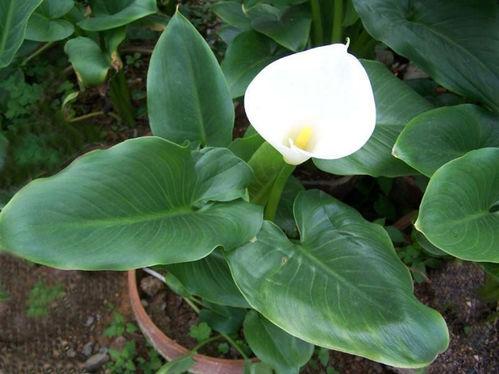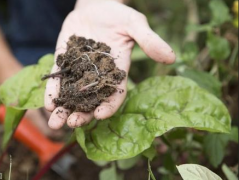How to plant calla lilies and what are the precautions? How to fertilize calla lilies? what are the nutritional requirements?
Few flowers have the elegance and simplicity of calla lilies. Although not real lilies, Karas is an integral part of weddings and funerals, and their classic flowers represent love and dedication. Karas can be high at the waist and needs plenty of water and high phosphate fertilizer. The use of calla lilies can not only improve overall health, but also promote more and larger flowers. Fertilization of calla lilies should also be carried out during planting.
Feeding calla lilies during planting and re-sowing calla lilies during planting and every spring can help promote a large number of flowers to grow. Avoid high-nitrogen diets, which will promote foliar development but reduce flowers. These South African natives are heavy water users and need plenty of appropriate nutrients to maximize flowering and healthy growth. Some tips on how to fertilize calla lilies will ensure beautiful flowers and erect, vibrant plants.
Calla lilies grow from tubers. Like bulbs and bulbs, these are underground storage organs that contain all the materials plants need to produce leaves, stems and flowers. Tubers need to be plump, free from defects and injuries. Check every year to see if your tubers must be lifted indoors and crossed.
When you are ready to plant them in the spring, prepare a well-drained garden bed or put them in a container with a well-sealed mixture. Add well-rotten compost, bone meal or cow dung to the soil and start feeding step by step. You may also want to provide tubers with a fortnightly diluted fish lotion to stimulate growth.
Remember, feeding calla lilies is only part of the equation. The calla lily plant is a water lover, and it must not be allowed to dry without water in its growth process.
How to fertilize calla lilies
In the southern climate, calla lilies can stay underground and will produce leaves all year round. In the north, these young stems should be lifted and stored in a cool, dry room until spring or all the dangers of frost have passed. Plants left in the soil benefit from mulch in their root zones. This will slowly compost the soil to enrich it while retaining moisture.
For annual calla lilies feeding, use organic products or regularly release the mixture. They provide nutrients at a slow rate, and plants can easily ingest them. You can also add bone powder around the root zone to add phosphorus to enhance flowering. High-phosphorus formulations can also be used to fertilize calla lilies in the spring, but keep in mind that this provides only a high dose of macronutrients, and plants need to be fed evenly to ensure overall health.
Other nutritional requirements of calla lilies
Calcium is another important nutrient in calla lilies. You may need to conduct a soil test to determine if your garden soil contains enough calcium. Bone meal is also effective for natural sources of calcium, as are eggshells. You can also add gypsum or lime to the soil before planting tubers.
This should be done at least 6 months before the tuber is installed, so some advance planning is required. The plant also needs nitrogen, but avoids high-nitrogen formulations and promotes the formation of leaves and stems. Instead, use good composting with nitrogen and carbon balance. This natural, slow-release product will gradually enter the soil to provide feed for tubers for a year.

- Prev

How to sow beet seeds? What soil is better for beet planting and how to harvest sugar beet?
Sugar beets are a good crop-flexible to soil types, undemanding and unlikable. More importantly, you can harvest two different delicious crops from the same plant, making it a vegetable worth making room in your garden.
- Next

The utilization of agricultural waste and the drying of livestock manure as a processing fertilizer have a good impact on the environment.
According to the "categories and specifications of fertilizers", if livestock manure is to be used as fertilizer, it can only be used as livestock manure composting, general composting or miscellaneous composting. Chen Junji, vice chairman of the Council of Agriculture, reported at the Social Welfare and Health and Environment Committee of the Legislative Yuan on the 29th.
Related
- A course of planting techniques and methods on how to grow carrots
- How to plant the latest tulips?
- Is it better to pick tea in the morning or in the afternoon? When is the best time for tea to be picked? what is the third or fifth tea?
- Launch Yuanxiao Happy combination Haocha + Tea Yuan healthy Taste
- Penghu Tourism "Fireworks 20 Parade with You"
- 2022 West Lake Happiness holds "Digital Revitalization Voucher" and draws iphone13 and laptop.
- Banqiao Fuzhou social houses are designed to change start-up combined with police elimination to create a safe and livable environment
- The convenient measure of "mechanical weeding" in Xinbei has been abused and the Agriculture Bureau has imposed heavy penalties on the illegal land consolidation.
- Changgeng University Joins Hands with Four Memory Factories to Rescue Memory Talent Shortage
- The list of Taiwan's top 100 MVP managers is listed by the Director-General of the Farmers' Association of Sanxia District.

